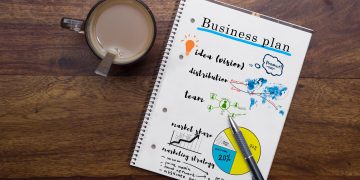Adapted from content excerpted from the American Express® OPEN Small Business Network
Cash flow problems often catch small business owners by surprise. An accurate cash flow projection can protect entrepreneurs against this situation. A cash flow projection charts the amounts of money your business expects to receive and pay out each month in a rolling six- or 12-month period. This forecast takes into account the lag time between billing your clients and getting paid; incurring an expense and paying for it; and collecting taxes that aren’t due to the government until a later date. A well-prepared cash flow projection will allow you to plot anticipated cash flow positions over time. It will help you anticipate shortfalls in time to do something about them, protecting you from a cash flow crisis. Also, a cash flow projection can help you spot sales trends, tell you if your customers are taking too long to pay, and help you plan for major asset purchases. In addition, should you decide to seek a loan, banks will ask to see one-year cash flow projections by month, and three- to five-year projections by quarter. The following step-by-step process will guide you through preparation of a cash flow projection:
Step 1: Cash on hand
Count your cash at the beginning of the first month of your projection. This amount is your “cash on hand.” In succeeding months, the ending cash balance from one month will be carried over as the beginning cash balance of the next month.
Step 2: Cash receipts
Record cash sales, credit card sales, collections from credit accounts, and any interest income. The key to doing this successfully is recording receipts in the months you actually expect to get the money, not the month a sale is made.
Step 3: Accounts receivable
Record anticipated receivables in the months you expect them to be paid. If you have not kept records that show you how long it takes individual customers to pay their bills, calculate your “average collection period” by dividing your total sales for the previous year by 365. That gives you your average daily sales volume. Then, divide the $currency_text$ value of your current accounts receivable by the average daily sales volume. That number is the average number of days it takes you to collect on a bill. Using that number as a guide, record payments as they will come in over the next year.
Step 4: Miscellaneous cash
Account for anticipated miscellaneous cash infusions, including new loans from banks or family members, or stock offerings.
Step 5: Total cash available
For each month in your projection, add the amounts in steps one through four. This figure shows the total cash available to you in each month.
Step 6: Cash paid out
Now it’s time to calculate how much cash you anticipate spending in each month of your rolling projection.
First, assess operating expenses. Again, the secret is to note every expense in the month it will be paid, not the month it is incurred. Be sure to include the following items in your list of operating expenses:
- Gross wages, including anticipated overtime
- Monthly stipends to owners
- Payroll taxes and benefits, including paid vacations, paid sick leave, health insurance, and unemployment insurance
- Subcontracting and outside services, including the cost of labor and materials
- Purchases of materials for use in making your product or service, or for resale
- Supplies for use in the business
- Repairs and maintenance (be sure to include occasional large expenses for remodeling, renovation, etc.)
- Packaging, shipping and delivery costs
- Travel, car, and parking costs
- Advertising and promotion, including fliers, direct mail, print or TV ads, yellow pages listings, web site maintenance and design
- Professional services such fees paid to attorneys, bookkeepers, accountants, consultants, etc.
- Rent
- Telecommunications such as phone, fax, Internet Service Provider
- Utilities such as water, heat, electricity, gas
- Insurance including fire, liability, workers’ compensation, etc.
- Taxes
- Interest due on loans
- Other expenses focusing on costs specific to your business
- Miscellaneous (include a small cushion for miscellaneous expenditures)
- When you’re finished recording these, subtotal your operating expenses.
Step 7: Other costs
Calculate the other ongoing costs of doing business. Be sure to include the following items:
- Loan principal payments – vehicles, equipment purchases, etc.
- Capital expenditures – depreciable expenditures such as equipment, vehicles, construction of new or improvements to existing buildings, and improvements to leased facilities and offices
- Start-up costs – expenses incurred prior to the first month of operation and paid for over the course of the following year(s)
- Reserve or escrow – money set aside monthly for taxes paid at the end of the year, plus any money escrowed to help make payments on large insurance or machinery bills, for example
- Owner’s withdrawal – payment of owner’s income tax, health and executive life insurance, etc.
Step 8: Total cash paid out
Once you have listed all other costs of doing business, add them to your subtotal for operating expenses. This figure is your “total cash paid out,” and reflects your estimates for the total cash you will have to spend each month.
Step 9: Determine your monthly cash flow
Subtract your total cash paid out (Step 8) from your total cash available (Step 5). The difference is your monthly cash position or cash flow. As you plot your projected cash flow, check to be sure your cash position at the end of each month is positive. If it is not, take steps early to cover these anticipated shortfalls.
Update your cash flow projection monthly, making adjustments whenever you encounter an unexpected expense or income. As actual sales and disbursements are made, list the actual amounts next to the estimates on your cash flow projection. Check for accuracy in your forecast, and make adjustments to future months as needed. As one month ends, add another month to the end of your rolling projection.
Copyright © 1995-2016, American Express Company. All Rights Reserved.









